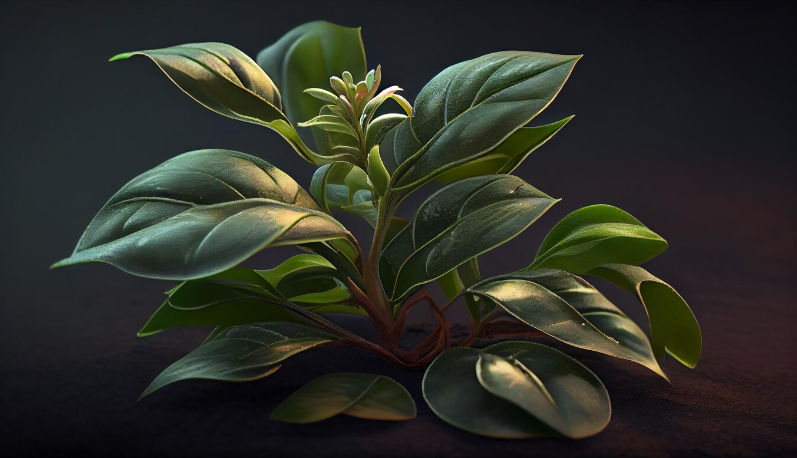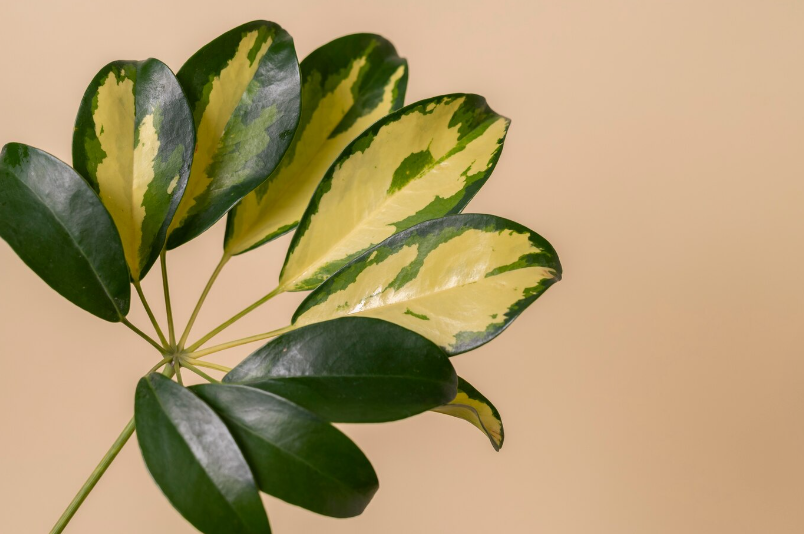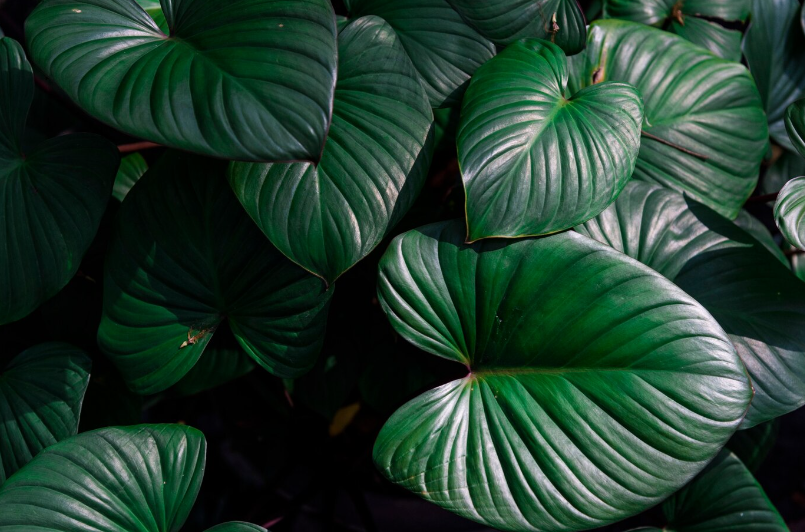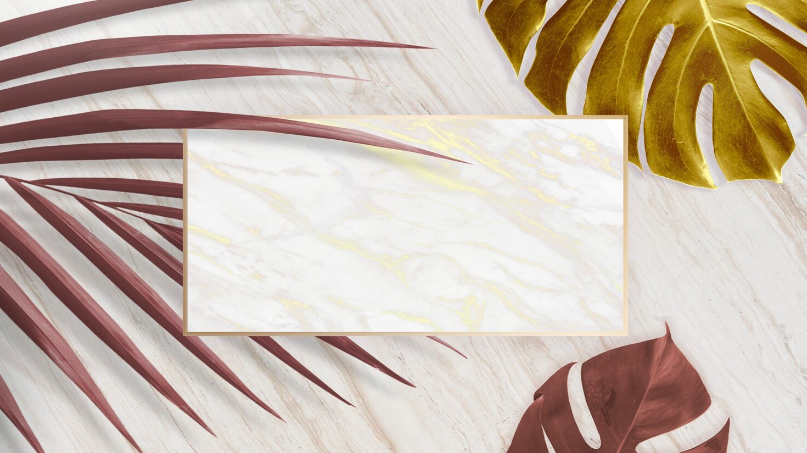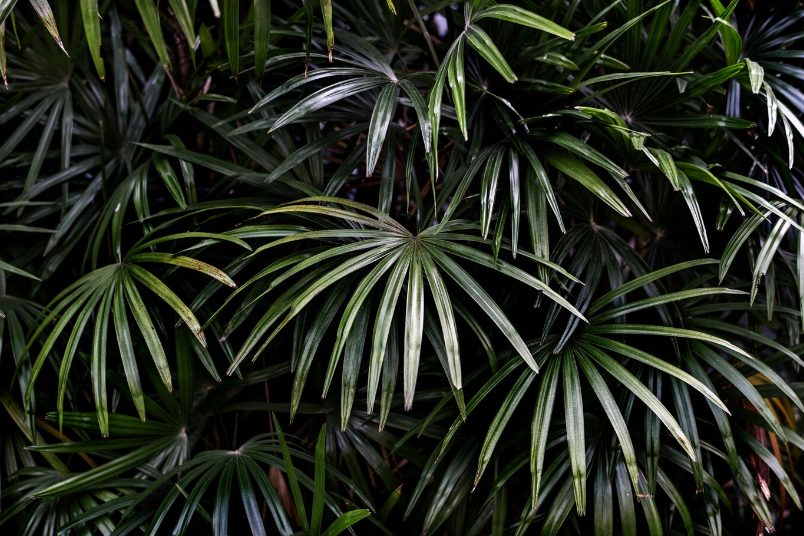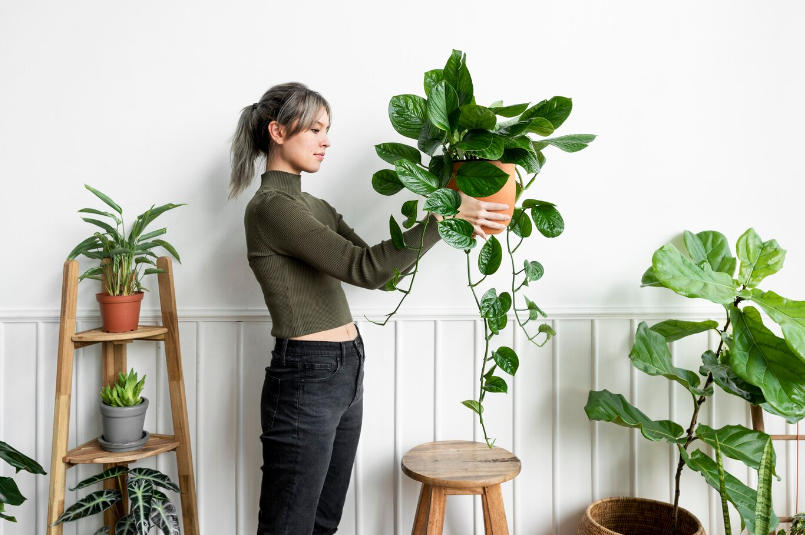From Neon to Congo Diverse Varieties of Common Philodendrons

The philodendron is a diverse genus of tropical plants that belongs to the Araceae family. Known for their lush foliage and ability to thrive in various conditions, philodendrons have become popular houseplants around the world. In this article, we will explore two common varieties of philodendrons: Neon and Congo.
The Neon philodendron, also known as Philodendron scandens ‘Neon’, is a vibrant and eye-catching plant. Its heart-shaped leaves are a bright chartreuse color, adding a pop of color to any space. The Neon philodendron is a versatile plant that can be grown both indoors and outdoors, as long as it is provided with indirect sunlight and well-draining soil.
The Congo philodendron, on the other hand, is characterized by its large and glossy leaves. Scientifically known as Philodendron bipinnatifidum, this variety has a more tropical look compared to the Neon. The leaves of the Congo philodendron are deeply lobed and can grow up to three feet long. This plant thrives in warm and humid environments, making it an excellent choice for bathrooms or kitchens.
While the Neon and Congo philodendrons may have different appearances, they share some common care requirements. It is important to water these plants regularly, allowing the soil to dry out slightly between waterings. Additionally, philodendrons benefit from occasional misting to increase humidity levels. Fertilizing every two to four weeks during the growing season will also help promote healthy growth.
Whether you choose the vibrant Neon or the tropical Congo, philodendrons are an excellent choice for adding greenery and freshness to your home. Their beauty and resilience make them a popular choice among plant enthusiasts of all levels of experience. So why not bring a bit of tropical paradise into your space with a philodendron today?
Philodendron Varieties
Philodendrons are a diverse group of plants that are known for their beautiful foliage and easy care. There are many different varieties of philodendrons, each with its own unique characteristics and growth habits.
One popular variety is the Neon Philodendron, which is known for its vibrant, lime green leaves. This variety thrives in bright, indirect light and is a great choice for adding a pop of color to any room.
Another popular variety is the Congo Philodendron, which has large, dark green leaves with a glossy texture. This variety can tolerate lower light conditions and is a good choice for those who don’t have a lot of natural light in their home.
The Heartleaf Philodendron is another common variety that is known for its heart-shaped leaves. This variety is versatile and can be grown in a hanging basket, on a trellis, or as a trailing plant. It is easy to care for and can tolerate a wide range of light conditions.
The Split-Leaf Philodendron, also known as the Monstera deliciosa, is another popular variety that is known for its large, fenestrated leaves. This variety requires bright, indirect light and can add a tropical touch to any space.
These are just a few examples of the many varieties of philodendrons available. Whether you prefer a bright and colorful plant or a more classic, green variety, there is sure to be a philodendron that suits your taste and style.
Different Types of Philodendrons
Philodendrons are popular houseplants known for their beautiful foliage and low maintenance requirements. While there are numerous varieties of philodendrons, some of the most common types include:
1. Heartleaf Philodendron (Philodendron hederaceum)
The Heartleaf Philodendron is a classic houseplant with heart-shaped leaves that are green in color. It is known for its ability to thrive in low light conditions, making it an ideal choice for indoor spaces.
2. Split-leaf Philodendron (Philodendron bipinnatifidum)
The Split-leaf Philodendron, also known as the Swiss Cheese Plant, has large, deeply lobed leaves that give it a unique and tropical appearance. This plant requires bright indirect light and regular watering to thrive.
3. Velvet-leaf Philodendron (Philodendron micans)
As its name suggests, the Velvet-leaf Philodendron has soft, velvety leaves that are green with a bronze tint. This plant is a trailing vine and looks stunning when grown in hanging baskets or allowed to climb up a trellis.
4. Prince of Orange Philodendron (Philodendron ‘Prince of Orange’)
The Prince of Orange Philodendron is a hybrid variety with vibrant orange leaves that turn more green as they mature. This plant requires bright indirect light and regular watering to maintain its striking foliage color.
5. Xanadu Philodendron (Philodendron x ‘Xanadu’)
The Xanadu Philodendron is a compact and bushy variety with deeply lobed, glossy green leaves. It is a popular choice for landscaping and adds a tropical touch to gardens and outdoor spaces.
These are just a few examples of the diverse varieties of philodendrons available. Whether you’re a beginner or an experienced plant enthusiast, there is a philodendron type that will suit your preferences and care level.
The Rarest Philodendron in the World
The world of philodendrons is filled with a wide variety of stunning and unique plants, but there is one that stands out among the rest as the rarest of them all. Meet the Philodendron spiritus-sancti, a truly extraordinary plant that captivates and amazes those lucky enough to encounter it.
The Philodendron spiritus-sancti is native to the dense rainforests of the Democratic Republic of Congo, where it remains hidden deep within the lush foliage. Its name, which means “the holy spirit” in Latin, perfectly captures its otherworldly beauty and elusive nature.
What sets the Philodendron spiritus-sancti apart from other philodendrons is its striking foliage. The leaves are a rich, deep green and have a velvet-like texture that is incredibly soft to the touch. The veins that run through these leaves resemble delicate threads of gold, creating a mesmerizing contrast against the dark background. It is no wonder that collectors from around the world eagerly seek out this precious plant.
Due to its rarity and high demand, finding a Philodendron spiritus-sancti can be quite a challenge. It requires an experienced and dedicated collector to navigate the intricate network of suppliers and enthusiasts. Furthermore, the plant is extremely delicate and requires specific care to thrive, making it even more elusive.
For those fortunate enough to acquire a Philodendron spiritus-sancti, it becomes a treasured centerpiece of any collection. Its striking beauty and rarity make it a coveted addition, revered by amateur and professional botanists alike. This plant truly represents the pinnacle of philodendron appreciation.
As we delve deeper into the world of philodendrons, it is important to recognize and appreciate the incredible diversity and uniqueness that these plants possess. The Philodendron spiritus-sancti serves as a reminder that nature is capable of creating masterpieces that leave us in awe and wonder.
The Easiest Philodendron Varieties to Care For
Philodendrons are popular houseplants known for their lush green foliage and easy care. They can thrive in a variety of conditions and are a great choice for beginners or busy plant owners. Here are some of the easiest philodendron varieties to care for:
| Variety | Light Requirements | Watering Frequency | Growth Rate | Special Care |
|---|---|---|---|---|
| Philodendron Brasil | Medium to bright indirect light | Allow top inch of soil to dry between waterings | Medium | Regular pruning to maintain bushy appearance |
| Philodendron Heartleaf | Low to bright indirect light | Allow top 2 inches of soil to dry between waterings | Fast | Use a well-draining potting mix |
| Philodendron Selloum | Bright indirect light | Keep soil consistently moist, but not waterlogged | Slow to medium | Requires a larger pot as it grows |
| Philodendron Micans | Medium to bright indirect light | Allow top inch of soil to dry between waterings | Medium | Loves high humidity, mist regularly |
These philodendron varieties will add beauty and greenery to any indoor space with minimal effort. Remember to adjust care based on your specific growing conditions and always observe your plants for signs of stress or health issues.
Neon Philodendron: A Study in Vibrancy
Neon Philodendron is one of the most eye-catching varieties of the common Philodendron species. With its vivid neon-colored leaves, it adds a touch of vibrancy to any indoor or outdoor space. The leaves of the Neon Philodendron are known for their bright green color, which can range from pale lime to intense electric green.
One of the reasons why the Neon Philodendron is so popular among plant enthusiasts is its ability to thrive in both low-light and bright-light conditions. It can tolerate a wide range of light conditions, making it an ideal choice for those who want to add a splash of color to their homes or offices.
Another striking feature of the Neon Philodendron is its unique leaf shape. The leaves are heart-shaped with a wavy edge, giving them an artistic and playful appearance. The combination of the vibrant color and quirky leaf shape makes the Neon Philodendron a true standout in any plant collection.
Moreover, the Neon Philodendron is relatively easy to care for. It requires regular watering, but it is important to allow the soil to dry out between waterings to avoid overwatering. Additionally, it thrives in well-draining soil and prefers a humid environment.
Overall, the Neon Philodendron is not only a beautiful addition to any plant collection, but it is also a fascinating study in vibrancy. Its bright and bold colors, along with its unique leaf shape, make it a captivating plant that can instantly elevate the ambiance of any space.
What is a Neon Philodendron?
A Neon Philodendron is a popular houseplant known for its vibrant, bright green leaves. This variety of Philodendron, also known as Philodendron cordatum ‘Neon’, stands out for its striking coloration and ease of care.
The leaves of a Neon Philodendron are typically heart-shaped and have a glossy texture. When exposed to direct sunlight, the leaves can take on a neon-like glow, hence the name. This plant is perfect for adding a pop of color to any indoor space.
Neon Philodendrons are relatively easy to care for, making them a great choice for beginner plant owners. They thrive in moderate to bright indirect light and prefer well-draining soil. It is important not to overwater this variety of Philodendron, as it is susceptible to root rot.
Like other Philodendrons, the Neon variety can also help improve indoor air quality by removing toxins from the air. It is a low-maintenance plant that can bring a touch of tropical beauty to any home or office.
The Difference Between Lemon Lime and Neon Philodendrons
When it comes to Philodendrons, the Lemon Lime and Neon varieties are two popular choices among plant enthusiasts. While they may seem similar at first glance, there are a few key differences between these stunning plants.
The Lemon Lime Philodendron, also known as Philodendron Birkin, is characterized by its vibrant, lime-green leaves. The leaves have a glossy texture and can develop stunning variegation as they mature. This variety thrives in bright, indirect light and prefers to dry out between waterings.
In contrast, the Neon Philodendron, also known as Philodendron ‘Moonlight’, features bright, chartreuse leaves. The leaves have a neon-like glow that adds a pop of color to any space. This variety does well in medium to bright indirect light and prefers to be kept slightly moist.
Another noticeable difference between these Philodendrons is their growth habit. The Lemon Lime Philodendron has a more compact growth habit and tends to stay smaller in size, making it an excellent choice for smaller spaces or tabletop displays. On the other hand, the Neon Philodendron is known for its vigorous growth and can quickly become a large, sprawling vine if given the right conditions.
In terms of care, both varieties prefer well-draining soil and benefit from regular fertilization during the growing season. However, it’s crucial to note that the Neon Philodendron is generally more forgiving when it comes to moisture levels, whereas the Lemon Lime Philodendron is more prone to root rot if overwatered.
Whether you choose the Lemon Lime or Neon Philodendron, both varieties are sure to bring a touch of tropical beauty to your indoor space. With their unique characteristics and stunning foliage, these Philodendrons are excellent choices for any plant collector or enthusiast.
Why Is My Neon Philodendron Turning Pink?
If you’re noticing that your vibrant neon philodendron is suddenly turning pink, there could be a few reasons behind this color change. It’s important to understand the possible causes so that you can take the necessary steps to maintain the health and beauty of your plant.
One possible reason for the pink hue is a natural reaction to environmental factors. Neon philodendrons are known for their ability to adapt to different light conditions, and too much direct sunlight can cause the leaves to turn pink or even red. If your plant is located near a window where it receives direct sunlight for several hours a day, consider moving it to a spot with more indirect light.
Another factor that can contribute to the pink coloration is temperature. These plants thrive in temperatures between 65-85°F (18-29°C), so if the room is too cold or too hot, it can affect the pigmentation of the leaves. Ensure that your neon philodendron is in a room with a constant and comfortable temperature.
Additionally, the pink color change may be an indication of improper watering. Overwatering or underwatering can stress the plant and cause the leaves to become pink or pale. Make sure you’re watering your neon philodendron appropriately by allowing the top inch of soil to dry out between waterings.
| Possible Causes of Pink Neon Philodendron | Solutions |
|---|---|
| Exposure to direct sunlight | Move the plant to a spot with indirect light |
| Extreme temperatures | Ensure the plant is in a room with a constant and comfortable temperature |
| Improper watering | Water the plant appropriately by allowing the top inch of soil to dry out between waterings |
If you’ve taken all the necessary steps and your neon philodendron is still turning pink, it’s always a good idea to consult with a plant expert or a nursery to rule out any other underlying issues. With proper care and attention, your neon philodendron will regain its vibrant green color and thrive in your home or office.
Delving into Philodendron Congo
The Philodendron Congo is a striking and popular houseplant that is known for its unique and exotic appearance. With its large, glossy green leaves that have a distinct heart shape and deep ridges, this plant is sure to catch the eye of any plant lover. Native to the rainforests of South America, the Philodendron Congo is a tropical plant that thrives in warm and humid environments.
One of the standout features of the Philodendron Congo is its ability to grow and propagate easily, making it a great choice for both beginner and experienced plant enthusiasts. It can be grown as a hanging plant or potted on a shelf or table, adding a touch of green and elegance to any space.
While the Philodendron Congo is easy to care for, it does require some specific conditions to thrive. It prefers bright, indirect light, so placing it near a window where it can receive filtered sunlight is ideal. It also likes to be kept moist, but not overly wet, so be sure to water it regularly but allow the top inch or two of soil to dry out between waterings.
One of the benefits of having a Philodendron Congo is its air-purifying qualities. It is known to remove toxins such as formaldehyde and xylene from the air, improving the air quality in your home or office. This makes it a great choice for those looking to create a healthier and more vibrant living space.
In conclusion, the Philodendron Congo is a beautiful and easy-to-care-for houseplant that adds a touch of tropical beauty to any space. Its unique appearance, air-purifying qualities, and ability to propagate easily make it a popular choice among plant lovers. Whether you are a beginner or an experienced plant enthusiast, the Philodendron Congo is sure to bring joy and beauty to your home or office.
What is Philodendron Congo?
Philodendron Congo is a popular tropical plant that belongs to the Araceae family. It is known for its large, glossy, and heart-shaped leaves, which can grow up to 2 feet long. The leaves are deep green in color, but as they mature, they develop a beautiful bronze hue, adding to the plant’s visual appeal.
This Philodendron variety is native to the rainforests of Central and South America, specifically in the regions of Brazil, Bolivia, and Argentina. It thrives in warm and humid environments, making it a great addition to indoor gardens or tropical-themed spaces.
One of the distinguishing features of Philodendron Congo is its ability to grow upright, thanks to its thick stem and sturdy structure. This makes it an ideal choice for those who want to incorporate vertical elements into their plant displays.
When it comes to care, Philodendron Congo is relatively low-maintenance. It prefers bright, indirect light but can tolerate lower light conditions. It is important to keep the soil consistently moist but not waterlogged, as overwatering can cause root rot. Regular misting and occasional fertilization during the growing season can help promote optimal growth.
Overall, Philodendron Congo is an attractive and versatile plant that can bring a touch of the tropics to any space. Whether placed in a pot or mounted on a moss pole, this plant is sure to be a captivating addition to any plant lover’s collection.
The Difference Between Red Congo and Green Congo Philodendron
Philodendrons are popular houseplants known for their vibrant foliage and easy care. Two varieties of Philodendron, the Red Congo and the Green Congo, are frequently seen in nurseries and homes. While they share similar characteristics and care requirements, there are a few key differences between these two varieties.
The most obvious difference lies in the color of their leaves. As the name suggests, the Red Congo Philodendron has deep red leaves, adding a dramatic touch to any indoor space. In contrast, the Green Congo Philodendron has lush green leaves, which are more typical of Philodendron varieties. The foliage of both plants is glossy and heart-shaped, creating an attractive display.
Another difference between the Red Congo and Green Congo Philodendron is their growth habit. The Red Congo tends to be more compact and bushy, making it ideal for smaller spaces such as shelves or countertops. On the other hand, the Green Congo can grow quite tall and vine-like, requiring a trellis or support system to prevent it from sprawling. This growth habit makes the Green Congo a perfect choice for those seeking a trailing or climbing plant.
In terms of care, both varieties of Philodendron require similar conditions. They thrive in bright, indirect light and prefer to be kept moist but not waterlogged. Regular watering and occasional misting will ensure their health and vitality. Additionally, Philodendrons are known for their ability to purify the air, making them excellent choices for improving indoor air quality.
Whether you choose the vibrant Red Congo or the classic Green Congo Philodendron, you will be rewarded with a stunning houseplant that adds beauty and freshness to your home. Their unique characteristics and easy care make them suitable for both novice and experienced plant enthusiasts.
The Lifespan of a Philodendron Congo
The lifespan of a Philodendron Congo can vary depending on various factors such as care, environment, and climate. However, with proper care and ideal conditions, a Philodendron Congo can live for several years, and in some cases, even decades.
Philodendron Congo plants are known for their longevity and resilience. These plants can tolerate a wide range of light conditions, including low light, making them suitable for indoor environments. They also have the ability to adapt to different temperatures and humidity levels, making them versatile and easy to care for.
To ensure a long lifespan for your Philodendron Congo, it is important to provide it with the right conditions. This includes placing it in a well-draining potting mix, watering it regularly but not overwatering, and providing it with indirect sunlight or bright, filtered light.
Regularly checking the plant for any signs of pests or diseases and taking prompt action is also crucial for maintaining its health and lifespan. Additionally, fertilizing the plant during the growing season can help promote its growth and overall well-being.
With proper care and attention, a Philodendron Congo can become a long-lasting and cherished addition to your indoor or outdoor space. Its lush green leaves and unique foliage patterns can bring beauty and elegance to any environment, making it a popular choice among plant enthusiasts.
Remember, each Philodendron Congo is unique, and its lifespan can vary. By following the right care guidelines and providing it with a suitable environment, you can increase the chances of your Philodendron Congo thriving and enjoying a long and healthy life.
Unique and Rare Philodendron Varieties
While there are many common and popular philodendron varieties, there are also some unique and rare ones that plant enthusiasts covet. These varieties have distinctive features that make them stand out from the crowd.
1. Philodendron Pink Princess (Philodendron erubescens)
The Philodendron Pink Princess is known for its stunning foliage featuring dark green and pink leaves. Its colors and patterns can vary, with some plants displaying more intense shades of pink. This variety is highly sought after by collectors as it is harder to find and requires specific care.
2. Philodendron White Knight (Philodendron ‘White Knight’)
The White Knight Philodendron is an eye-catching plant with its glossy, arrow-shaped leaves that begin as light green and gradually turn white as the plant matures. Its unique variegation and high contrast make it a popular choice among philodendron enthusiasts.
3. Philodendron Gloriosum (Philodendron gloriosum)
The Philodendron Gloriosum is known for its velvety heart-shaped leaves that have a striking, iridescent sheen. The leaves are deep green with prominent white veins, giving it an elegant and captivating appearance. This rare variety requires higher humidity levels to thrive.
4. Philodendron Painted Lady (Philodendron ‘Painted Lady’)
The Philodendron Painted Lady is a unique hybrid variety that displays gorgeous foliage with bright shades of yellow, orange, and green. Its leaves have a splash of color, resembling a painter’s stroke. This variety is highly sought after for its vibrant and eye-catching appearance.
5. Philodendron Santo Domingo (Philodendron ‘Santo Domingo’)
The Philodendron Santo Domingo is an uncommon variety that stands out for its long, narrow leaves with wavy edges. The leaves have a dark green color and a glossy finish, creating a visually appealing effect. This variety is favored by collectors looking for a philodendron with a unique leaf shape.
6. Philodendron Jungle Boogie (Philodendron ‘Jungle Boogie’)
The Philodendron Jungle Boogie is a rare and exotic variety that features large and deeply lobed leaves. Its foliage has a unique texture and vibrant green color, making it an attractive addition to any plant collection. This variety requires bright indirect light and regular watering to thrive.
These unique and rare philodendron varieties offer a chance for plant enthusiasts to own something truly special and distinct. Whether it’s their striking colors, variegation, or unique leaf shapes, these plants are sure to add a touch of uniqueness to any collection.
Is Philodendron Pink Congo Real or Fake?
With the increasing popularity of rare and exotic plants, the Philodendron Pink Congo has become a sought-after addition to many plant collections. However, this unique plant has also gained a reputation for being commonly mislabeled or misrepresented in the plant market.
The confusion surrounding the Philodendron Pink Congo primarily stems from the fact that there are both real and fake versions of this plant. The real Philodendron Pink Congo, scientifically known as Philodendron erubescens, is a hybrid plant that was developed through selective breeding. It features stunning, heart-shaped leaves with vibrant pink hues and green variegation.
On the other hand, the fake Philodendron Pink Congo often referred to as “Pink Princess” or “Pink Congo,” is a different plant species altogether. This plant, scientifically known as Aglaonema pictum ‘Tricolor’, resembles the real Philodendron Pink Congo in appearance, with its pink and green foliage. However, the leaves of the fake Pink Congo tend to be broader, while the variegation is less pronounced and does not have the same vibrant pink coloration.
One way to determine whether a Philodendron Pink Congo is real or fake is by closely examining its leaves. The real Pink Congo will have distinct and consistent variegation patterns, with clear delineation between the pink and green areas. The fake Pink Congo, on the other hand, may have less defined patterns and variations in color intensity.
Another important factor to consider is the source of the plant. Authentic Philodendron Pink Congo plants are typically grown from tissue culture or propagated through stem cuttings. It is essential to purchase from reputable sellers or nurseries that can provide accurate information about the plant’s origin and authenticity.
While the fake Pink Congo can still be an attractive addition to your plant collection, it is crucial to be aware of the differences between the real and fake versions. Understanding the distinctions will help you make an informed decision and ensure you are getting the plant you desire.
What is the Difference Between Philodendron Birkin and Rojo Congo?
Philodendron Birkin and Rojo Congo are two popular varieties of the philodendron plant. While they belong to the same genus, there are some distinct differences between the two.
The first noticeable difference is in their appearance. Philodendron Birkin has glossy dark green leaves with pinstriped variegation that starts off as cream-colored and turns white as the plant matures. On the other hand, Rojo Congo has large elongated leaves that are dark green in color and have a velvety texture. The leaves of Rojo Congo also have a reddish tinge on the undersides, giving the plant its name.
Another difference between the two is their growth habit. Philodendron Birkin is a slow-growing plant that remains relatively compact, making it a great choice for small spaces. Rojo Congo, on the other hand, is a fast-growing plant that can reach impressive heights if given the right conditions. This makes it suitable for larger indoor spaces or as a statement plant in a garden.
Caring for these two varieties also differs slightly. Philodendron Birkin prefers bright indirect light and should be kept away from direct sunlight to avoid leaf burn. It also requires well-draining soil and regular watering, allowing the top inch of the soil to dry out between waterings. Rojo Congo, on the other hand, can tolerate lower light conditions but thrives in bright indirect light. It also prefers a well-draining soil and should be watered when the top few inches of the soil feel dry.
In conclusion, while both Philodendron Birkin and Rojo Congo are beautiful additions to any plant collection, they differ in appearance, growth habit, and care requirements. Choosing between the two depends on the space available, lighting conditions, and personal preference.
Comparing Silver and Rio Philodendrons
Silver and Rio philodendrons are two popular varieties of the common philodendrons. While they both belong to the same species, Philodendron scandens, they have distinct characteristics that set them apart from each other.
The Silver philodendron, also known as Philodendron ‘Silver Sword’, is named for its unique silver-colored leaves. These leaves have a glossy texture and can grow to be quite large. The Silver philodendron is prized for its aesthetic appeal, and it can add a touch of elegance to any indoor space.
The Rio philodendron, on the other hand, is known for its vibrant green leaves with yellow veins. This variety is also called Philodendron ‘Brazil’. The Rio philodendron has a more tropical and exotic look compared to the Silver philodendron.
When it comes to care requirements, both Silver and Rio philodendrons are relatively easy to maintain. They prefer bright, indirect light and well-draining soil. They can adapt to different humidity levels, but they thrive in moderately humid environments.
Another difference between these two varieties is their growth habit. The Silver philodendron tends to grow more upright, making it a suitable choice for hanging baskets or climbing on a trellis. On the other hand, the Rio philodendron has a trailing habit and can be used in cascading arrangements or as ground cover.
In terms of propagation, both Silver and Rio philodendrons can be propagated through stem cuttings. Simply cut a healthy stem below a node and place it in water or well-draining soil until roots develop. This makes it easy to expand your collection or share these beautiful plants with others.
Whether you choose the Silver or Rio philodendron, both varieties are excellent choices for indoor plants. They are not only visually appealing but also have air-purifying qualities, making them a great addition to any home or office.
Question and Answer:
What are some common varieties of Philodendrons?
Some common varieties of Philodendrons include the Neon Philodendron, Congo Philodendron, and the Heartleaf Philodendron.
How do you care for a Neon Philodendron?
To care for a Neon Philodendron, you need to place it in a brightly lit area with indirect sunlight, water it regularly but avoid overwatering, and mist the leaves occasionally to provide humidity.
What are the characteristics of a Congo Philodendron?
A Congo Philodendron is characterized by its large, glossy leaves that can grow up to 2 feet long. It has a vining growth habit and requires partial shade and a well-draining soil.
Can I propagate a Heartleaf Philodendron?
Yes, you can easily propagate a Heartleaf Philodendron by taking stem cuttings and rooting them in water or a well-draining soil mix.
